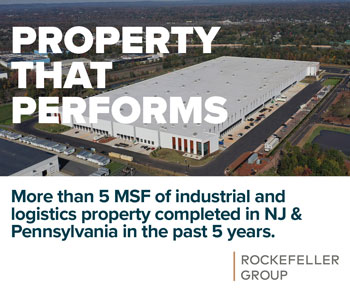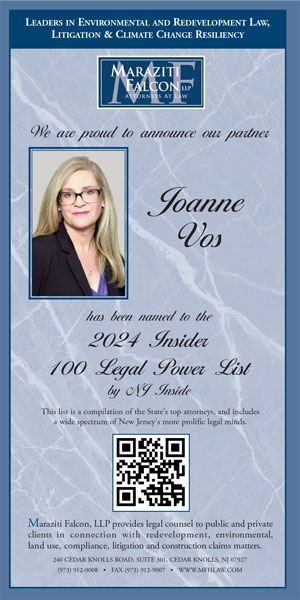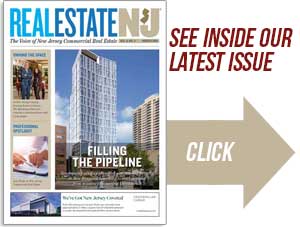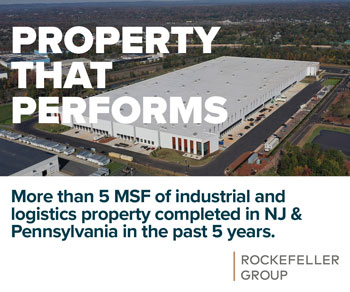By Joshua Burd
A return to the office could help bring commuters back to urban employment hubs such as Manhattan, lifting the market for transit-centric apartments in northern New Jersey.
At least that’s the hope of multifamily owners and developers in the region, who already see a rebound in activity as employees transition back to the workplace at least part of the time. Industry leaders say that shift is now taking place in locales such as the Hudson waterfront, where occupancy and net effective rents suffered at the height of the pandemic.
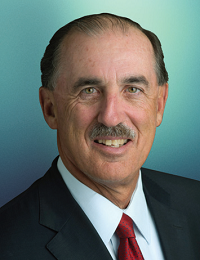
“People realize they’ve got to go back to the office,” said Jeff Dunne, a vice chairman with CBRE and leader of the firm’s tristate capital markets team. So apartments that are within walking distance of mass transit are “seeing a spike in leasing activity” from renters who had fled to the suburbs or to a location hundreds of miles from where they work.
“Now that they have to come back to their office at Penn Plaza, Grand Central or wherever it is, they’re looking more seriously at these train-oriented buildings,” he added. “We’re selling a number of them and we’re seeing those occupancies go up, and we’re seeing really good leasing activity right now in that space because … that message is getting out.”
Dunne spoke in late May at NAIOP New Jersey’s Mid-Year Economic & Markets Outlook, moderating a panel discussion on how commercial real estate would fare as vaccinations become more widespread and as the COVID-19 crisis subsides. In one of several topics, the panelists said the market for luxury apartments near mass transit was showing signs of a recovery as companies prepare to reopen their offices.

It remains to be seen how quickly that will happen and to what degree. Duncan Kisia, the Port Authority of New York and New Jersey’s lead economist and assistant director for planning and regional development, said that office usage fell much more sharply in dense, transit-rich cities such as New York than in those that are more reliant on automobiles. Estimated occupancy in the region was still less than 15 percent as of March 1, he said, citing the building security firm Kastle Systems’ data on key fob swipes in its portfolio. That points to a steeper climb for office occupancy in the region, especially given the uncertainty over hybrid work schedules.
Still, Kisia noted that mass transit usage across the Hudson River showed slight upticks during the pandemic’s calmer stretches, such as last summer, showing commuters’ willingness to board a train when cases weren’t spiking. To be sure, average daily ridership at New Jersey PATH train stations has ticked up in recent months, from nearly 26,000 in January to about 35,000 in April, although still far below pre-pandemic levels of 118,000.
“There is a substantial opportunity for some mode shift to occur, just given the size of those numbers,” Kisia said, noting that mass transit accounted for about 80 percent of all commutation across the Hudson, pre-pandemic. “But ultimately … for the bus market, for the PATH market, which are relatively close in, all told I think you might end up seeing a stronger recovery back to those activities once things settle and people get a little bit more comfortable with commuting.”
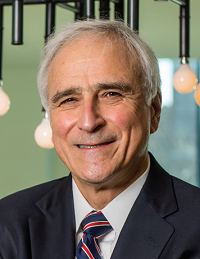
Gus Milano, Hartz Mountain Industries’ president and chief operating officer, said suburban apartments were largely unaffected and may have even benefited from how residents and workers shifted during the crisis. It was “a completely different story” from urban submarkets such as Jersey City, Weehawken and Hoboken, where occupancy rate percentages fell from the high 90s to around the mid-80s, even in top-tier buildings and neighborhoods.
“That’s all bounced back now — we’re at just about the mid-90s across the board on the waterfront,” said Milano, whose firm is based in Secaucus. Net effective rents have yet to rebound, he added, but believes that’s coming soon.
“I think concessions are starting to roll back and our effective rents will start to increase,” he said. “People are recognizing that they need to come back to the office and they’re starting to make that move … I think the waterfront market will be pretty well stabilized and back to where it was by the end of the year.”
Milano, who currently serves as NAIOP New Jersey’s chapter president, is also encouraged by a hospitality industry that is “bouncing back much faster than any of us expected.”
“And what we’re seeing in our New York hotels is pretty shocking,” he said “There’s a dearth of international tourists and business travel, but the regional travel and the tourist travel is picking up and there’s much more movement in New York City now.”
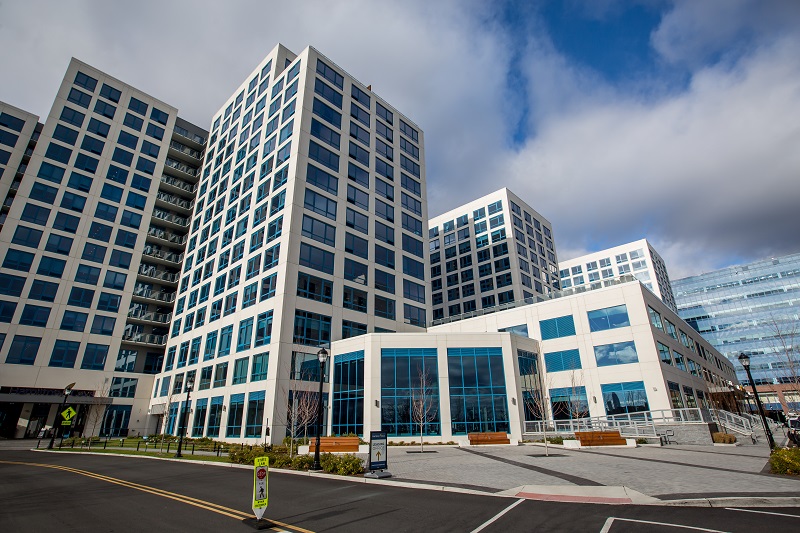
Even so, Kisia struck a note of caution about how the continuation of remote work would impact office usage and commuting patterns. Citing data from the federal Bureau of Labor Statistics and private studies, he said employees in the information, financial services and professional and business services sectors have shown to work remotely more frequently without sacrificing as much productivity. That could loom large for the New York metropolitan area.
“When we think about our region specifically, the fact that we have a higher proportion in these three industries probably means that, all else equal … we might have a higher remote work factor long-term than the rest of the country,” Kisia said. While the prospect is speculative for now, he said, it merits “a lot more study to get a better handle on what it means” for the local economy.

It’s not the only source of uncertainty. While many companies are set to bring their teams back to the office, hesitancy by employees and the prospect of some colleagues being unvaccinated still play a role, according to Jonathan Kushner of Kushner Real Estate Group. He believes that incentives, such as free rides on NJ Transit and PATH trains for the first 30 days, could help.
“Landlords could cover part of the cost and get everyone moving again,” said Kushner, president of the Jersey City-based firm. “I think people need some sort of public-private incentive to get people going because companies are in a gray area.”
He added: “Right now no one knows whether to stay home or not stay home. If you give them a reason to leave, they’ll just start leaving again and (do so) habitually.”



